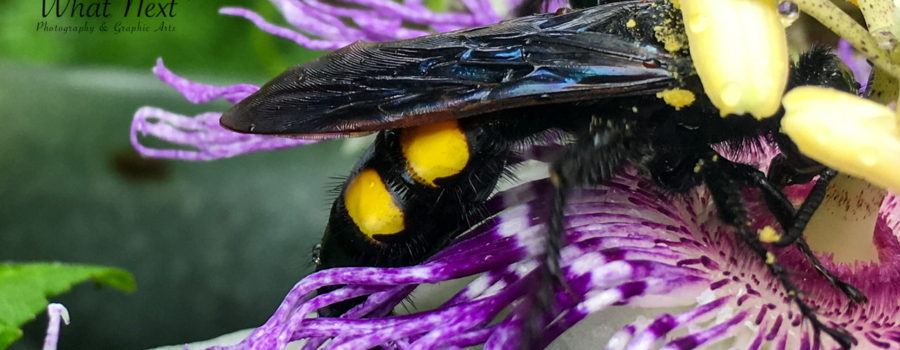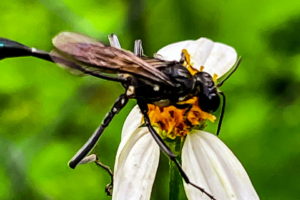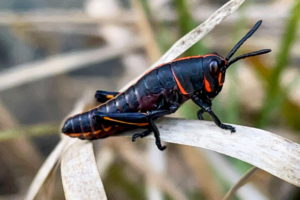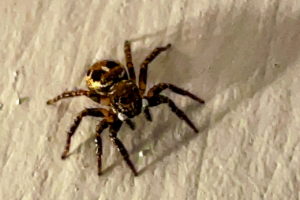The Unusual Life Style of the Amazing Scoliid Wasp
This past spring and summer I was lucky enough end up with quite a few passion fruit vines growing on my property. We have never had them before, and I have no idea how they got here, but they were loads of fun, and at the end of the summer they produced delicious fruit. One of the main reasons I enjoyed them so much was because of all the interesting butterflies, caterpillars, bees, and wasps that they attracted.

One afternoon I was outside photographing the passion fruit flowers and some of the butterflies that hovered around them when I noticed a large wasp with its head buried deep into the flower. It’s body was covered in bright yellow pollen from the flower, and it was feeding on the nectar. I was able to snap a few shots before it headed off to the next flower. Once it moved out of the flower so I could see all of it, I realized it was a scoliid wasp. The scoliid wasps are some of the largest wasps in the world, and there are five species here in Florida. They all look very similar, so I couldn’t tell the species, but I could tell that this one was a female since the females tend to be larger than the males, and have a thicker, heavier body.

Scoliid wasps are unusual in that they prey on the larvae of scarab beetles. Female wasps enter a hole in the dirt that contains beetle larvae and paralyze a larva by stinging it. The wasp then makes a small cavern around the paralyzed larva and lays an egg. When the egg hatches, it feeds on the beetle larva for one to two weeks. Because of this unusual characteristic, scoliid wasps have been used to help control the populations of beetles that damage crops, especially sugar cane.

As I followed this one particular wasp from flower to flower, I realized that there were actually quite a few more hovering around a few inches from the lawn. Some of these were females that were searching for holes containing beetle larvae, and others were males that were hoping to catch a female coming out of a hole ready to breed. The scoliid wasps are not aggressive, but they will sting if stepped on (I guess I probably would too if I were a wasp!), so I decided that I should probably take my feet that were wearing nothing but flip flops into another area that might be safer for me and for the wasps!





Recent Comments